A well-groomed Angora is just so cute and fluffy! But do they always look that way? With our angora rabbit grooming tips, your angora bunny will always look ready to cuddle.
But how do you groom angora rabbits? Don’t they just keep themselves clean and neat?
The truth is, that fluff-ball does require some coat maintenance to retain such a cute appearance. The angora rabbit’s fur needs weekly grooming sessions, sometimes even more often, to prevent wool block, matted coat, and other health issues.

Note: Before we begin
While we refer to the grooming here for angora rabbits, the same tips and techniques apply to all long-haired rabbits. While some of these were developed for wool production, other breeds were intended primarily as pets or show animals.
These might include:
-
and possibly others as they are added
How to Groom Angora Rabbits
All that cute fluff definitely requires some work. Fortunately, most people find that the grooming sessions offer another opportunity to bond with your bunny, while keeping him healthy and happy. A bonus: when you groom rabbits each week, you have a chance to find health issues early. This helps prevent them from becoming major problems.
How Much Time?
For most long-haired rabbits, plan about a half hour a week for the full grooming. When they are shedding, it might take a little longer. And yes, that thick fur will come out in gobs when shedding.
Training Young bunnies
Start grooming and handling your angora rabbit regularly from as young an age as possible. Actually, this is a good idea for any breed of rabbit. But with the angora rabbit, it’s essential. They need to feel comfortable with the grooming tools and the process of using them.
Don’t worry. You won’t get a lot from very young rabbit’s fur. This training is more to prepare for when that luxurious fur comes in and you need him to know to stay still and allow you to groom. It also helps begin the bonding process. Most angora rabbits love these special times.
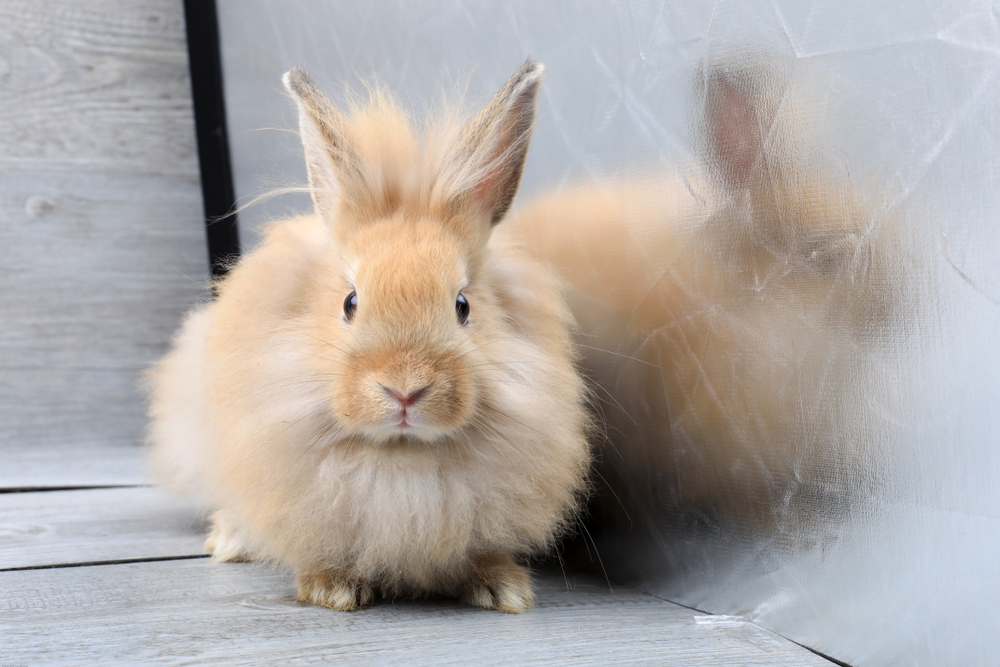
Why grooming Angoras is important
In a word, mats. Angora rabbit fur is beautiful when kept groomed and unsightly and even a health problem when it is not.
Mats can form anytime. But they are especially troublesome when the rabbit is shedding, also known as molting. You have two choices for avoiding mats. One is to groom angora rabbits fur often. The other is to keep the coat short by clipping it down.
Since most people choose an angora bunny for that gorgeous fluffy coat, weekly grooming is the best option.
The problem with mats
Most agree that mats are unsightly. They detract from the beauty that defines these beautiful rabbits.
But the angora rabbit benefits from the coat kept free from mats for health reasons, too. Mats cause skin irritation and can lead to diseases of the skin, too. That long hair, when matted against the skin, prevents the skin cells from getting air flow. Fungus, mites, fleas, and other health intruders then have a safe place to hide and damage your bunny.
If the mats continue to build, it’s also possible for them to block their ability to move about freely, eat and drink properly, and even block their ability to pee and poop. At that point, the rabbit’s life is threatened.
Wool block, gi stasis
Another health issue caused by lack of routine grooming is wool block or GI stasis.
Wool Block is similar to hairballs in cats, though often more deadly. When the rabbit attempts to groom himself, the fur becomes lodged in the stomach or other areas of the intestine. While cats will often cough up a hairball, your rabbit can not vomit. The fur remains stuck in the digestive system. If that accumulates, it can lead to GI stasis where the gut is blocked. A rabbit with this condition can die quite quickly from this.
Prevent Wool block
One way to help prevent wool block is by keeping up with the grooming process. The less hair that is loose, the less he is apt to ingest.
A diet that consists mostly of hay is equally important. Hay is high in fiber and helps keep the angora digestive system healthy. Some vets will also recommend a supplement with enzymes to help break up any wool the rabbit does eat.
Note that even high-fiber pellets don’t help like hay does. While you might be concerned about the hay and seed getting into the coat, it is the preferred method of feeding enough quality fiber.\

English Angora Rabbits
Shedding Periods and tips to groom angora rabbits during them
Some angora rabbits seem to shed all the time, while others go through shedding every 2-4 months. You will know he is shedding if you pet him and get a handful of hair. Yes, it seems to be so loose that it just falls out. Your rabbit is molting or shedding. While your weekly grooms might still be enough, some people choose to brush their bunny buddies several times a week to keep the fur from matting or causing a blockage.
I recommend grooming your rabbit 2 to 3 times a week when he is shedding. More often is fine, too. Some people choose to just brush longer during the weekly grooms. That might work for some but we find that the best results come when our angora rabbits are groomed regularly.
Shearing or Clipping
As I mentioned before, most angora rabbit owners prefer to keep their family pet with that delightful fur groomed rather than clipped. However, if you prefer to clip, most rabbits learn to accept the process readily. Angora rabbits were bred to be docile so they could be handled during the plucking or shearing process.
Pet clippers can be used to shear the coat as close to the rabbit’s skin as you choose. If you are not comfortable with this or don’t have the equipment, a pet groomer can usually do it for a fee. If you choose to shear at home, learn the process first. The clippers should be flat against the skin, never pointed into it.
You may also choose to clip the coat with scissors. This method is not as quick as shearing and might cause some cuts in the rabbit’s skin if he flinches at all. Remember, they have very thin skin so use caution.
</p >
Note: if you intend to use the coat for spinning into yarn.
Shearing takes the very short hairs along with the longer ones. this can cause problems with spinning as the shorter hairs are shed from the yarn.
Tools to use to groom angora rabbits
Before beginning the grooming session, assemble your tools.
-
a small slicker brush (a cat brush
-
grooming comb (I use both a wide-toothed comb and a narrow-toothed comb)
-
small, blunt-end scissors (mine are dog grooming scissors with blunt ends)
-
small nail clippers (cat or small dog)
-
cotton balls
-
ear cleaning solution or hydrogen peroxide
-
baggie, bucket, or box for storing harvested wool (if you plan to keep or sell)
-
an old towel
-
greens for bunny treats!
Holding your rabbit for grooming
Some people prefer to groom their angora rabbits with the rabbit on a sturdy table. Others groom their pet rabbit on their lap. Either way works, just ensure that the rabbit is secure. A fall from either place might cause an injury or death.
We prefer to groom on the porch to avoid getting excess fur scattered indoors. But a good vacuum helps if you groom inside your home.
I use a dog grooming table which has a nice rubber mat. Then I place the towel on that to give the rabbit a bit more comfort.
Tip: Consider wearing clothes that are easily washed when you finish.
That rabbit fur gets everywhere! You might even consider wearing a grooming smock to help contain the fur even more.
If you groom on your lap, place the towel on your lap and set the rabbit on the towel. This gives you a little extra safety to help cradle the bunny if need be.

American Fuzzy Lop Rabbit
Grooming rabbits
Start by running your fingers through the coat, feeling for tangles, mats, or even particles of food or hay seed. You can also use the slicker brush to very gently remove any of these before beginning.
-
Combing
For most of the brushing, I use a grooming comb. The teeth are close together which helps catch the loose fur and gently work out any mats. Use short strokes working from the end of the fur down to the skin. Remember to brush their fur on the ears, too. Also comb behind their ears and the fur on their face. You need to be extra careful combing around the eyes.
-
Working out mats
If you are grooming weekly or more often, most mats, if any, will be small and easy to remove. I usually begin by loosening them with my fingers. You can also use the slicker or the comb to help ease them apart.
If the mat is large or just too tight to work apart, use the grooming scissors. Be careful to avoid cutting the skin as it is very thin.
-
One tip to try is to cut small amounts of the mat first.
After each, try to break apart the mat with your fingers. You might also try cutting large mats into smaller sections first. Your hair cutting scissors should be able to cut through the mats but might not be able to release them entirely.
If the mats are large and close to the skin, you might need to resort to the pet clippers mentioned above. They remove mats close to the skin without cutting the bunny’s skin itself. And the fur will grow back!
-
Turning the bunny on her back
To groom the fur on the underside of the rabbit, you have to turn the bunny over. Most angora rabbits stay calm during this. In fact, they often go to sleep while lying on their back on your lap.
But do watch out for those feet. They can and sometimes do kick. And as you probably know, the hind legs can kick hard, inflicting pain with those nails.
-
Brushing the underside
Now you brush the belly, legs, and backside. With many rabbits, this is the area that is most likely to build mats. Look closely and keep this area well-groomed.
Another concern as you check out the underside of your rabbit is felting. This is when the fur compresses in but is not quite matted. It will feel coarser than that other fur areas.
You may still be able to comb this area out; if not, just use your clippers to cut it back. Then remember to check the area more frequently to ensure it doesn’t mat again. That long fur grows back quickly.
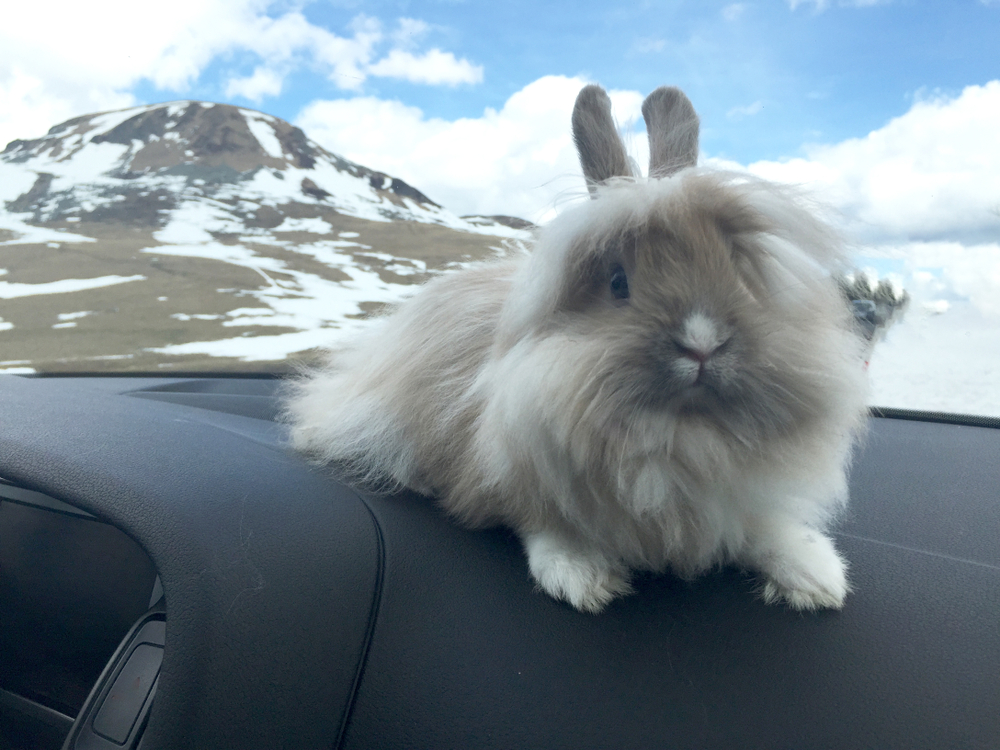
-
Alternative position
If your rabbit is not badly matted, it is possible to use the cradle position to groom her underside. This is similar to how you would hold an infant. Just make sure you and the rabbit are comfortable before proceeding.
-
Brushing the back & sides of your angora rabbit
The angora rabbit’s fur grows longest on the back and sides. This is the choice wool for spinning. But it’s also apt to mat if not cared for.
Use your comb and work in small sections. For very thick fur, I sometimes choose to use the slicker first. Use small sections and brush from the skin out.
-
Sorting out problems
If you found any evidence of mites or fleas, this is the time to treat them. Make sure the products you use are safe for angora rabbits.
-
Other grooming tasks for angora rabbits
-
Nail clipping
Each week we also check the rabbit’s nails. They usually need clipping about once a month but by checking weekly, we can clip them before they become too long and possibly cause harm.
This is easiest when the rabbit is on his back or in the cradle position. For white nails, just clip to the red line which is the blood supply which is called the quick. Don’t clip into it or it will bleed. Darker nails can be harder to see. For those, we clip a little at a time, usually just taking the tip off each week.
NOTE: If you do cut into the quick of the nail, don’t panic.
When we are cutting nails, we keep some corn starch or a nail styptic powder handy, just in case. These stop the bleeding and it heals quickly.
-
Teeth Check
While your angora rabbit is still on his back, check the teeth, too. For most angora rabbits being fed a good diet with lots of hay and chew toys, they will be fine. If not, talk with your vet about how to manage them.
-
Ear cleaning time
Use a cotton ball and either ear-cleaning solution or hydrogen peroxide to clean your rabbit’s ears. Dampen the swab with the cleaner and rub it around the inside of the ear. If it comes out dirty, repeat with a clean cotton ball. Usually, this is all it takes if you are cleaning them each week at his regular grooming.
For deeper cleaning, put a little of the ear cleaner into the ear canal. Rub the ear area (from outside the ear) to work the cleaner into the ear canal. Then use the cotton ball to swab out the excess.
Look for any evidence of mites when you do this. What do mites look like? If you see what appears to be coffee grounds, your rabbit probably has ear mites. Left untreated, these build into a serious condition. For early treatment, we use a little oil. If needed, your vet can provide you with a more potent treatment.

It’s Treat Time!
I place my angora rabbit back on the table, pet him as I tell him how good he was for the grooming time. Then I offer some greens. The treats help solidify the enjoyment of grooming for the rabbit. They are smart animals and easily relate the treats with the grooming.
You might also like…
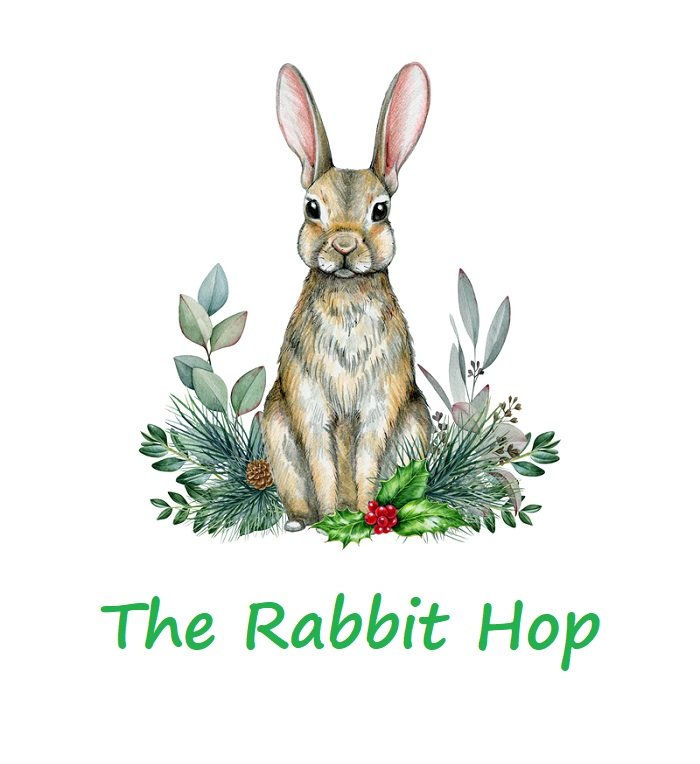
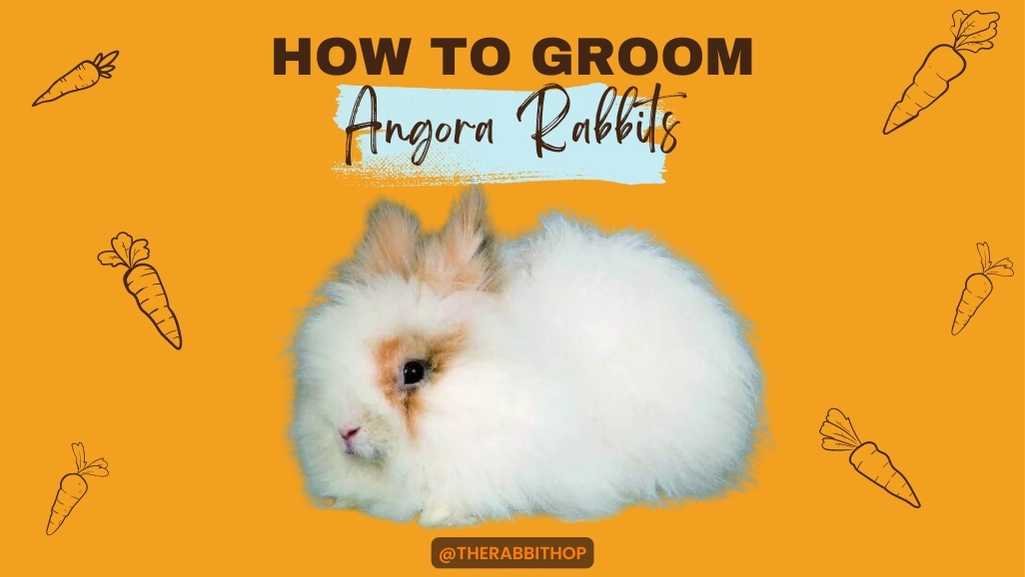

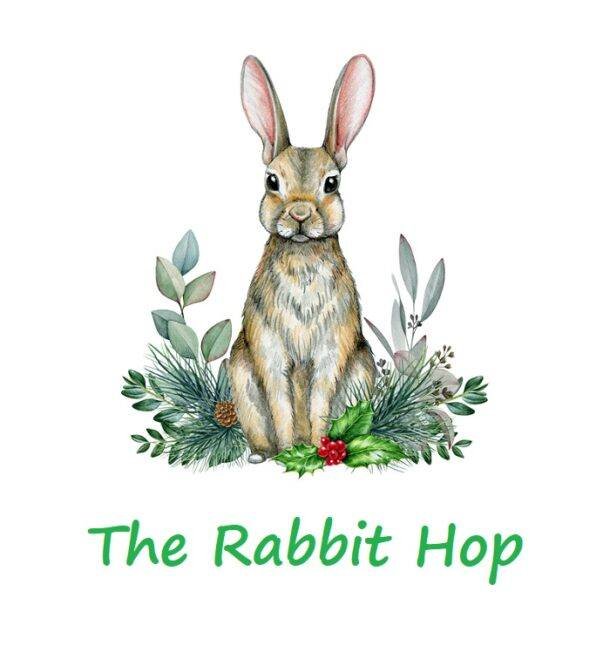
Hello, Natalie from Social Buzzzy here. I’ve found a revolutionary tool for Instagram engagement and couldn’t help but share it with you!
Social Growth Engine offers an extraordinary tool that elevates Instagram engagement. It’s simple:
– Keep focusing on producing incredible content.
– Cost-effective at just below $36/month.
– Safe, powerful, and perfect for Instagram.
Having seen fantastic results, and I believe you will too! Elevate your Instagram game now: http://get.socialbuzzzy.com/instagram_booster
Best wishes your success,
Natalie from Social Buzzzy